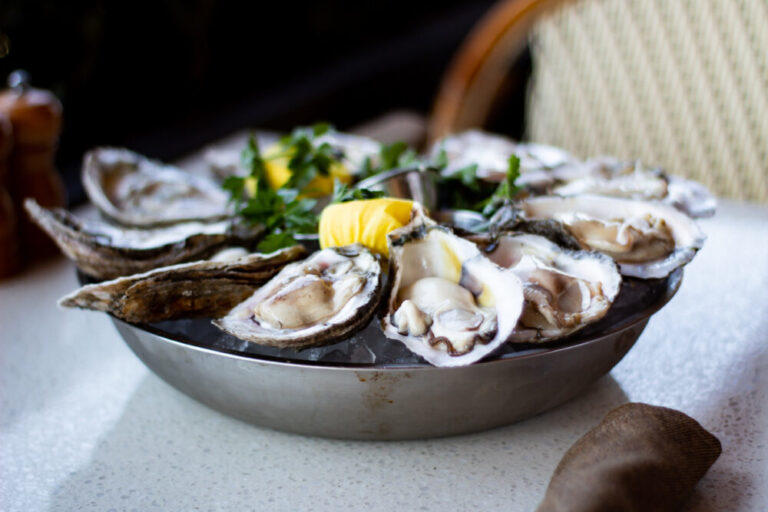
Caption
A plate of fresh, raw oysters with lemon and parsley sits on a table at C&S Seafood & Oyster Bar.
Credit: Sarah Swetlik/Fresh Take Georgia
Few foods are as divisive as oysters. In this week's commentary, Salvation South Editor Chuck Reece shares that the divide extends beyond the taste and texture and into the very cultivation of this Southern staple.

A plate of fresh, raw oysters with lemon and parsley sits on a table at C&S Seafood & Oyster Bar.
I came to oysters late in life. And folks like me who grew up in the mountain south, we got fed on pork and beef and chicken and garden vegetables. I think I refused seafood altogether until one night when my parents prevailed on me to order fried shrimp at a restaurant on Blue Ridge Lake.
Now, I'll never forget getting that plate of shrimp, peeling the foil cover off of a plastic container of tartar sauce, and dipping my first shrimp into it.
I was hooked and still am. I would eat fried shrimp every night if I could. But oysters? Nuh-uh. They were slimy. They looked like…well, you know what they look like.
Thus, I never ate raw oysters until I was in my mid-30s. I ate them at a little bar on St. George Island, Fla. My girlfriend at the time convinced me I should give them a try. So we ordered and a dozen oysters came out on a plastic lunchroom tray with little dishes of cocktail sauce and a basket full of Lance saltine crackers. My girlfriend showed me the drill: Put the oyster on a cracker, add some cocktail sauce on top of it, and eat the whole assembly in one bite.
It felt like eating the sea itself.
I was hooked and I still am. Now those oysters, I would later learn, came from Apalachicola Bay just on the back side of that island. And traditionally, oyster men plied that bay in flat-bottomed boats using huge tongs to pull the oysters up from their beds. But these days, for various environmental reasons, Florida officials have closed Apalachicola Bay to oyster tonging at least until 2025. And that situation has given rise to a new breed of oyster farmers. Folks who bring oysters to our tables in brand-new ways.
These folks put oyster spat — or little oyster larvae — into bags or cages and hang those from lines in the ocean. The farmers hit the water daily and tend their oysters carefully until they've grown big enough to take to market. Now, there are folks who dislike these new developments. They lament the loss of the tonging tradition. But the new methods of oyster farming bring us little miracles. You know wine buffs talk about terroir; how the soil that grapes are grown in affects the taste of the wine. And the miracle about farmed oysters is that each variety tastes different from the others.
Now, I bet that some of y'all are still turned off by the thought of eating raw oysters, but I encourage you to find a place where you can sample oysters from various farms because what you'll taste will amaze you.
Come visit us at SalvationSouth.com.
Salvation South editor Chuck Reece comments on Southern culture and values in a weekly segment that airs Fridays at 7:45 a.m. during Morning Edition and 4:44 p.m. during All Things Considered on GPB Radio. You can also find them here at GPB.org/Salvation-South and now on your favorite podcast platforms as well.
